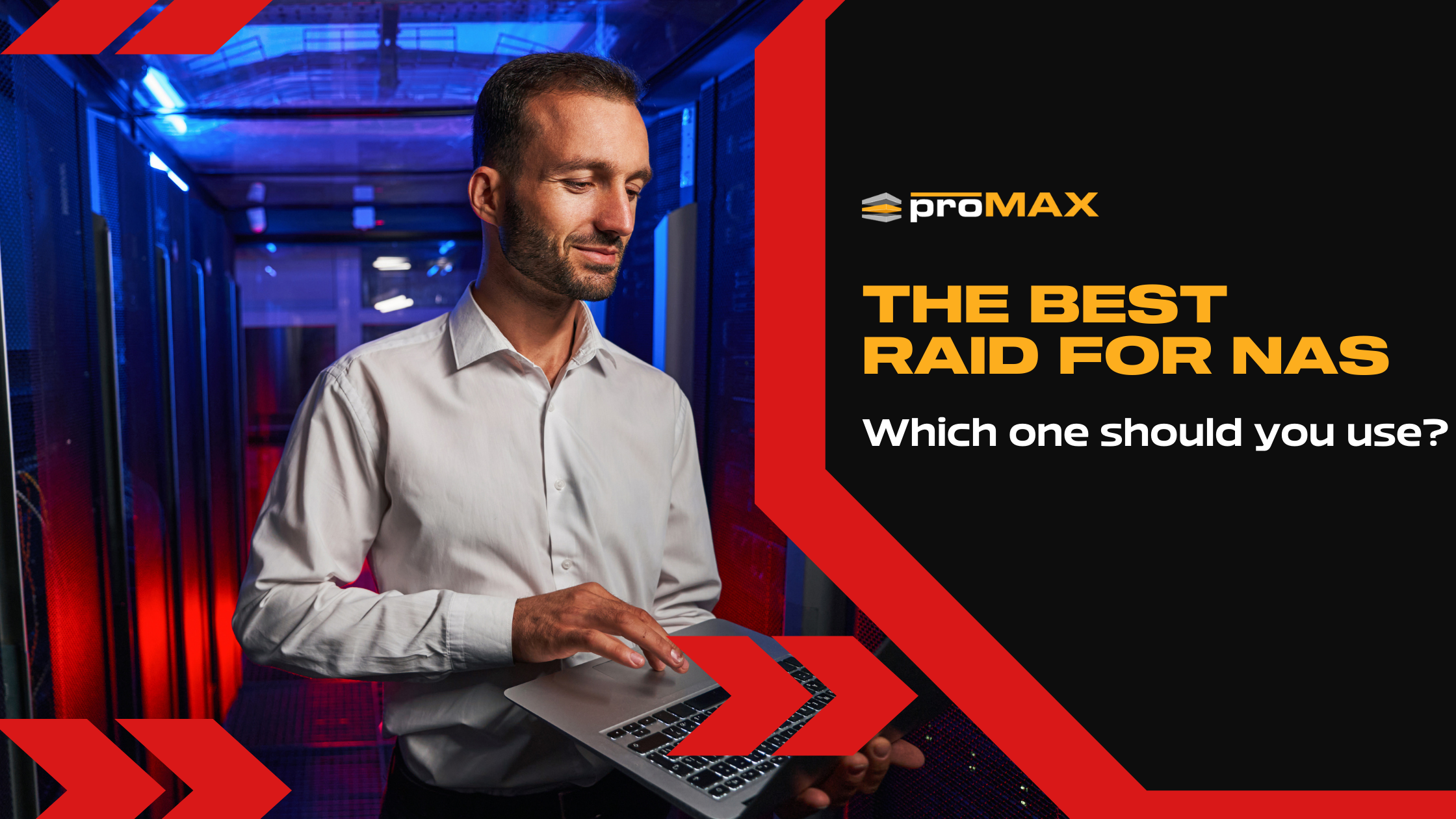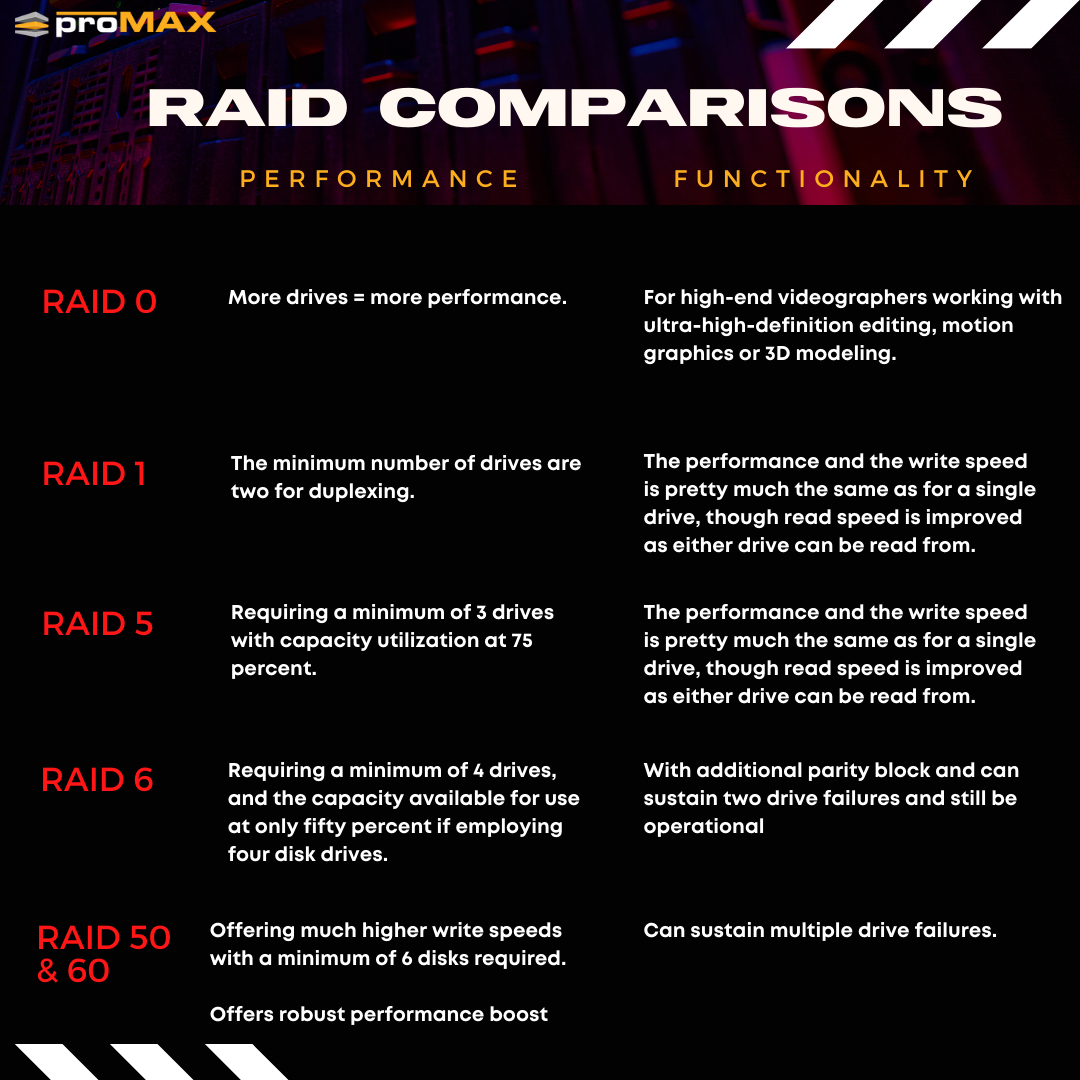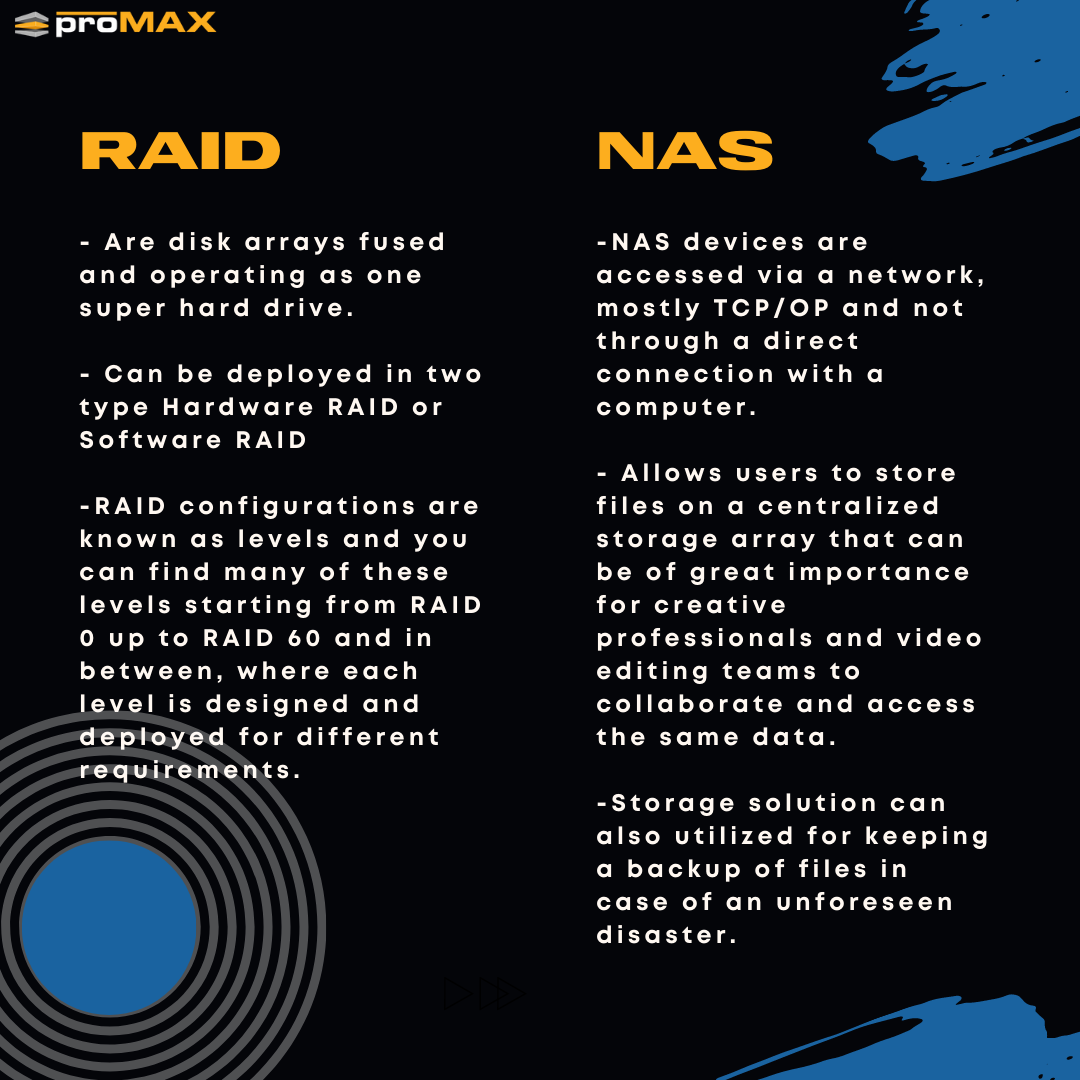
In today’s modern time the storage technologies are rapidly evolving to the needs and wants of users. RAID and NAS are the two most used of these and overlap in many instances, though they are fundamentally different in some ways. So, which one of these data storage technologies is better? Or can they be used interfused? Let us examine both technologies and how they build upon each other.
Redundant Array of Independent Disks (RAID)
RAID – redundant array of independent disks, are disk arrays fused and operating as one super hard drive. Working with multiple large size media and information files you will conceivably need more storage space and redundancy than a single drive would be able to offer. RAID is designed keeping in mind to improve upon performance and redundancy in storage systems. Requiring minimum input from the storage administrators in monitoring, maintenance and reducing the cost of adding more and more drives for up-gradation as compared to in another environment such as JBOD (just a bunch of disks). The RAID can be deployed in two types – a hardware RAID (RAID controller or RAID-on-chip) or a software RAID (software-only or hybrid).
RAID offers several configuration options to suit the specific needs and demands of an environment i.e. for a video editing workflow, you’ll need high read-write speeds or for a business archive you’ll need redundancy, all these and other requirements can be fulfilled using the RAID system. These configurations offer fault tolerance, strong performance, and increased storage capacity, using the redundancy in a well-balanced manner to increase the performance of the system many folds. Normally the RAID is employed in network-attached storage (NAS) environments, well known for a massive storage, backup, and media streaming solution.
Using the data virtualization technique, several physical disk drives - either SSDs or HDDs are combined into one logical unit that is capable and improved upon performance, data redundancy, or both at the same time. For normal home or small office users, software RAID is much cheaper and easier to implement but does take a toll on the system it is running on because it uses the system resources, while the hardware RAID with its built-in RAID controller performs much better - but is more expensive.
Depending on how much redundancy or the efficiency you need from your RAID configuration or even both at the same time you can use different RAID configuration options. RAID configurations are known as levels and you can find many of these levels starting from RAID 0 up to RAID 60 and in between, where each level is designed and deployed for different requirements. The levels are divided based on the minimum number of drives required, storage capacity available, read-write performance, and data mirroring. By and large, a RAID system offers speed and capacity, redundancy, and security needed for the storage space in this world of advanced technology.
The many levels of RAID, all of whom offer a certain specific feature, i.e. fault tolerance with performance and functionality are explained below:
RAID 0
RAID 0 or striping arrays divide the data equally across the disk drives, the striped disks behave as a single partition and are known for offering exceptionally higher read-write speeds. The minimum number of disks required for this level are two and the performance depends on the number of solid-state drives or hard drives used in the configuration, so more drives = better performance. The utilization capacity is at 100 percent meaning you don’t lose any space to redundancy, therefore, no fault-tolerance against drive failures. The rapid throughput makes this level the perfect companion for high-end videographers working with ultra-high-definition editing, motion graphics, or 3D modeling.
RAID 1
This level offers the most amount of redundancy or backup also known as failover, the exact opposite of RAID 0. The minimum number of drives required are two for duplexing and gives out fifty percent capacity with the other half being used for backup. Though you’ll get fifty percent capacity with 100 percent backup or failover – which is always good. The mirroring does slow down the performance and the write speed is pretty much the same as for a single drive, though read speed is improved as either drive can be read from.
RAID 5 – The Best RAID for NAS
RAID 5 is deemed the most widespread and used configuration throughout businesses and NAS devices. Combining the speeds of RAID 0 and data protection of RAID 1 into one configuration and is by far the most commonly used RAID level. The distributed parity of RAID 5 brings the most reliable inexpensive solution for data protection, with an additional disk to hold the parity bits for recreating the data automatically in case of a drive failure. So, requiring a minimum of 3 drives with capacity utilization at 75 percent.
RAID 5 is only capable of enduring a single drive failure and offers the feature of “hot-swappable” meaning you can easily swap the failed disk drive without even turning off your server or NAS device.
RAID 6
RAID 6 offers similar features as RAID level 5 with an additional parity block and can sustain two drive failures and still be operational. Though requiring a minimum of 4 drives, and the capacity available for use at only fifty percent if employing four disk drives and if you move to six drives, you’ll get 33 percent of your storage space dedicated to redundancy and the trend follows with more drives the more capacity becomes available.
RAID 50 & 60
RAID 50 or 5+0 brings together the striping and distributed parity offering much higher read-write speeds with a minimum of 6 disks required for initial deployment. RAID 50 can survive multiple drive failures as far as the drives happen to be at the right places.
RAID 60 or simply RAID 6 plus RAID 0 offers a robust performance boost and redundancy with the initial cost rising to a 6 disk minimum required to deploy. Things get a little more complex in here as compared to the single RAID configurations. There are many other levels as well primarily the combination of lower simpler levels i.e. RAID 0+1, RAID 10 (RAID 1+0) and many others that are designed and utilized in certain scenarios and for specific requisite environments. Will require more work on the implementation and maintenance end and budget cost rising.
All in all, the RAID offers a significant means of optimizing and improving the server and NAS performance with efficient recovery from hardware failures. While deciding amongst storage solutions it should be kept in mind that RAID is not a data backup, its active storage with a backup solution.

Network Attached Storage (NAS)
NAS – the Network Attached Storage is hard disk storage devices connected to an office or home network. This makes sharing a storage space much easier and can be accessed by multiple devices. NAS systems are networked devices that contain one or more hard drives that are generally arranged into logical redundant storage containers or RAID. NAS devices are accessed via a network, mostly TCP/IP and not through a direct connection with a computer. They are assigned an IP address and are accessed by clients via a server that functions as a gateway to the data, that is why NAS devices are called as NAS servers.
NAS allows users to store files on a centralized storage array that can be of great importance for creative professionals and video editing teams to collaborate and access the same data files. Accessible over the network these devices employ file protocols like NFS (Network File System) or SMB/CIFS (Server Message Block/Common Internet File System). The hard drives are enterprise-grade that can withstand operating all day, every day with much better performance.
NAS is an amazing way of creating network file shares within an organization if your employees frequently collaborate on the same files or need access to video files, audio files, document archives, records, or any other form of business information. The storage solution can also be utilized for keeping a backup of files in case of an unforeseen disaster or a drive failure and strengthen multimedia libraries for high-resolution large files, among other use cases, storing and trading files over a local network can be pretty convenient.
The NAS systems are expandable and you can simply upsize the system by adding another NAS device for more storage space. It also comes with an added level of fault tolerance for your network, here it makes use of measures such as RAID to prevent the NAS device from becoming a point of failure. NAS systems have an extra level of redundancy and security with RAID arrays. NAS lets you share large amounts of data easily, cost-effectively, and efficiently.
The growing demand for NAS systems is due to several important factors, just add more storage without upgrading or altogether replacing existing servers. It offers an expandable and affordable solution for users requiring network shared storage in an office or home environment. The architecture is designed in a way to allow end-user to add storage on the network without needing to buy a bigger server.
The administrative convenience by NAS brings a simple solution to store and share videos, audio, photos, or files from a central location and make it available to anyone with a device on the network. The features offered by a NAS system streamline the manual archiving and disk expansion functions, data protection, user and application partitioning, and other time-consuming storage maintenance operations. Fault tolerance is provided by multi-disk NAS with mirroring RAID features and functionalities.
Many factors go hand in hand while choosing the best NAS solution for your environment. They generally include read/write speeds over the network, reliability, scalability, capacity, number of users supported, data protection, and so on. The upshot of it all is a great deal of thinking and planning goes into selecting the right NAS device for your home or business environment.
NAS and RAID overlap
A limited number of the small business or home and most enterprise-grade NAS devices come with RAID support, with RAID configuration options. The devices designed for small business come with either a preconfigured state or let users chose from a handful of RAID levels. High-end systems offer a plethora of RAID options that storage administrators can use to suit their storage capacity, protection and performance needs.
For instance, an enterprise NAS device with a RAID 5 configuration will provide the users with hot-swap drives capability. Hot-swappable is a technique that allows IT admins to remove a failed drive and replace it with a new one without having to shut down the system using a specialized drive enclosure. This and many other features are accessible in NAS appliances and can serve in scenarios like mission-critical or when downtime is not an option.
NAS and RAID are essentially separate technologies, therefore you don’t have to choose one upon the other, as they can be employed proficiently together and entirely apart in several cases. Small home and business users can set up RAID with the right components in their computer and no detached NAS system is required. On the other side, several NAS devices support a JBOD (just a bunch of disks) mode.
NAS or RAID?

Why not both at the same time?
The performance in a NAS system is gauged by the components that went into making the device. For example, consider the following system resources: CPU, drives and RAM put a big impact on the device’s performance. NAS system powered with a server-grade processor like Intel Xeon line CPUs and loads of RAM speed up the file operations. Finally, the disk drives in the system with higher RPMs and enterprise-grade SSDs bring much better performance and long-term reliability by vendors like ProMAX offering everything you need for SSD, RAID setup and NAS.
On the RAID side, the configuration performance depends on the type of RAID controller, level selected and the type of drive used. The configuration you choose has the potential to impact the performance you need with high-end disk drives and hardware RAID, which you’ll get much better storage and reliability.
Now to be clear here, they both are not fundamentally the same things they have been designed for storage management and ease, following different architecture designs. Still, both the NAS and RAID can be used combined, if you need shared access to files, you can utilize a NAS in a RAID configuration to make sure drive failure doesn’t affect your data. The combination of both storage solutions is a must in a larger, shared storage environment.
If a drive goes bad your critical work files and all other data remain accessible, with optimum performance and the end-users won’t even feel any glitch in the service. Though if you’re considering dropping the price and don’t care about failover drives, then theoretically you can have NAS without a RAID option.
Since all drives can be prone to failures, whether a virus is to blame or a technical fault, a power surge, many storage gurus are nowadays advising to go this route to save your valuable business data and buy a NAS device with RAID configurations. To say the least, invest in automated recovery and backup solutions as a security net.
Whew! That was a mouth-full. Glad you made it to the end, are you ready to chat with someone about setting up your environment? Call 800-977-6629 or drop your info here
🔥



